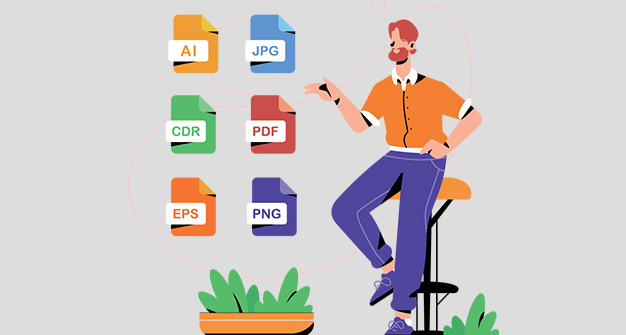Online experience for business needs visual graphical representation to enrich the content. Many articles, features as well as website content contain different file extensions to enhance the text content.
There are cases where many website or domain holders do not know which type of file they need to choose in different scenarios. Using file extensions properly always helps you to provide better user experience to your audience.
Many of these image file extensions are used for making logos, printing pictures on T-shirts, making graphical representations as per business needs. What are vector image files and when to use raster image files, everything has its own importance and perfect timing to use.
Have you got this thought that why we use JPEG more than PNG? We have appropriately explained below the importance of some image file formats, the difference between them when they can be used that will help you enhance your work.
We have two different types of image file formats that accommodate various types of file extensions under them. They are Raster file format and Vector file format.
Let’s have a look on which file extension have what type of specific uses.
VECTOR FILE FORMAT
PDF – Portable Document Format
So basically, PDF was invented by Adobe with the aim of getting enhanced word quality document from any system and application.
If you download any PDF file from Acrobat Reader software, then you can view it without any design software. But here the designer has to save your vector file in PDF format.
The best tool used by everyone universally to share graphical work.
AI – Adobe Illustrator Document
This is a file format type used by most designers for printing images from web. It is considered as the best file type which gives any designer right to enhance the graphical representation of any image or else make a new one.
Illustrator mostly create vector files so that it can be touched anytime. AI is also a standard file extension on which most of the designers work in the industry.
EPS – Encapsulated Postscript
EPS stands for Encapsulated Postscript which can be included both in vector and raster data image. EPS ensures that the logo or image is printed with the right resolution at right place.
You should never use an EPS file extension when you are using photographs, PDFs or TIF. Any vector-based artwork can be opened using EPS.
SVG – Scalable Vector Graphics
SVG and EPS could be combined with their definition and uses. They both retain the processed image quality. You do not have to worry about the quality of the image produced.
This is an ideal base for responsive web design. SVGs are used generally when we need to create computer generated graphs and diagrams for publishing on web.
RASTER FILE FORMAT
JPEG or JPG – Joint Photographic Experts Group
JPEGs is the most common version of the images that you get in your MS word version. It generally has the lossy imprint and can give you low quality image as the size goes on decreasing.
You can use these types of images in your presentation, web-based projects etc.
PNG – Portable Network Graphics
PNGs are editable and does lose their quality as they already possess low version of extension. We can use many colors in their background that makes the image better for any wed based project.
This file has high color depths and has become one of the most common range of formats available on internet.
GIF – Graphics Interchange Format
GIFs are very commonly used in today’s world. Whether it may be any social media platform or for any banner advertisement. Combined of RGB, it has a wide range of 256 colors.
This is an image that loads quickly and does not have higher resolution.
PSD – Photoshop Document
These files are generally created and saved in Adobe Photoshop. These extensions basically have different layers that could be used to make any image more enhanced.
These extensions do not work with vector images. It is familiar with raster file formats.
Conclusion
Working with different file extensions for your business is not a trend but a necessity for all the designers. Images are nowadays editable with variants and are produced using these extensions.
Getting used to these file formats and using them when required is an amazing aspect of text & image content world. The whole industry is now dependent on their graphic designers and the designers are dependent on these file formats. So basically, a friend in need is a friend indeed!!!


